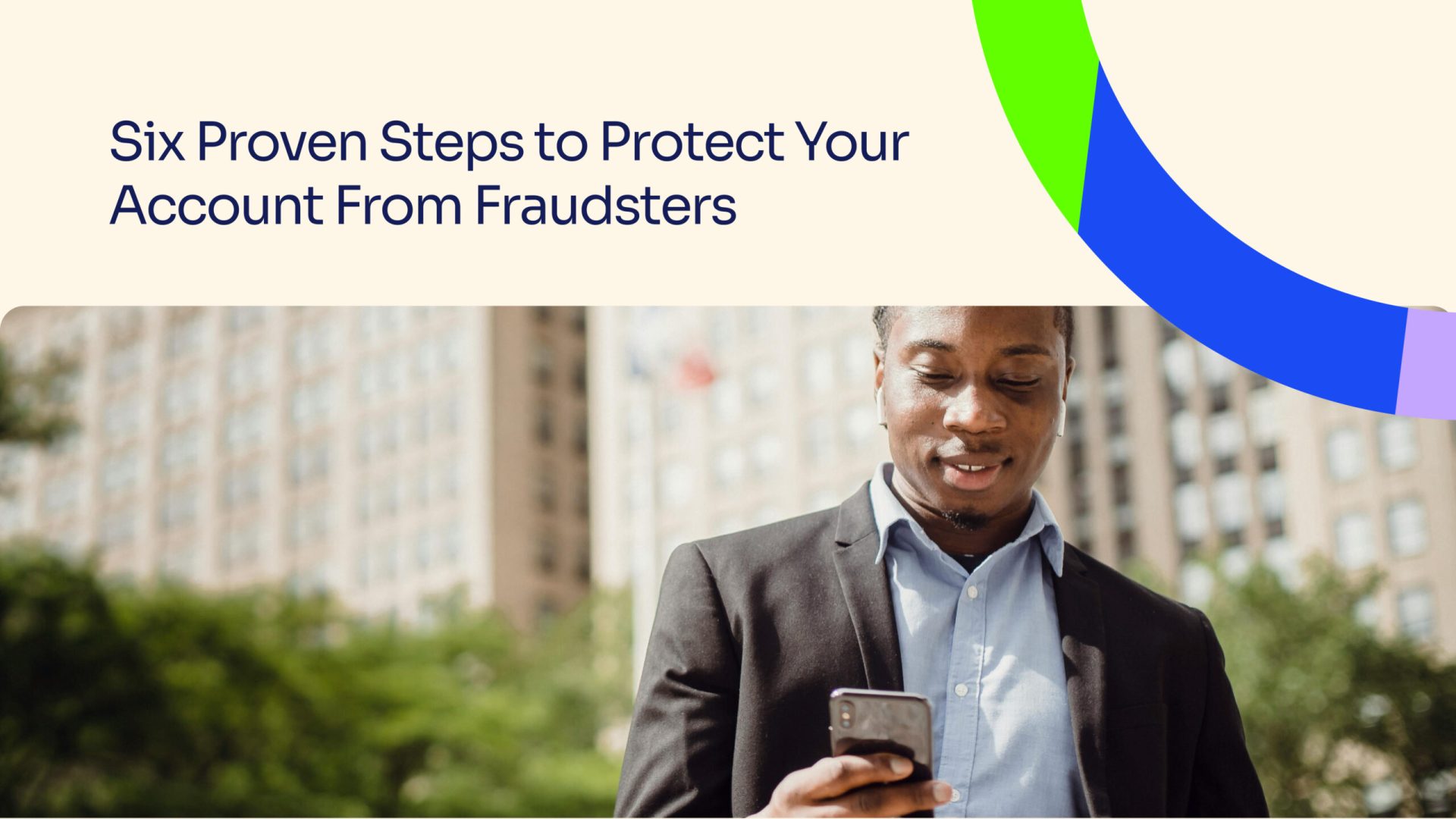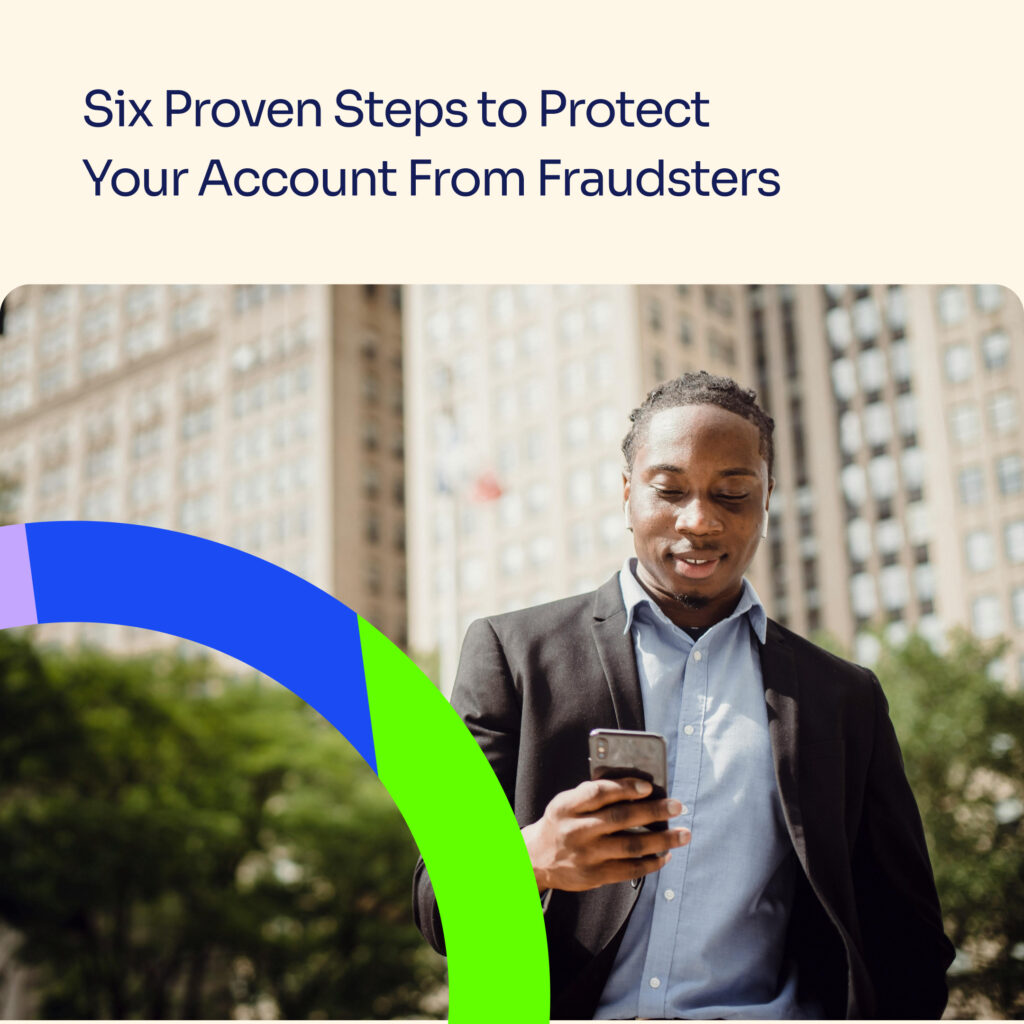Mobile banking has brought us convenience, but it also comes with risks, like making your account a target for fraudsters and hackers. And the bad news is that anyone can be a target. These Fraudsters are always lurking, looking for their next unsuspecting victim.
But on the bright side, they would struggle to break into your account and fail if you don’t let them in. In this article, I’ll walk you through six simple ways to secure your account and keep those intruders out for good.
- Use a Unique Password:
Your password is your account’s shield and the first thing fraudsters look into when trying to break into your account. That is why you should take extra care when creating a password for your account. Never use things that can be figured out easily, like your name, date of birth, phone number, last digits, etc. These things are easily guessable and give intruders a red carpet into your account.
Instead, your password should include a unique group of upper and lowercase letters, numbers, and special characters. These characters form a code unique to you. For example, Jhondoe26@ is a more solid and unique password than JohnDoe.
After creating a solid password, resist the urge to use that password on all your accounts. That act puts you at risk because when an intruder figures out that password, he can penetrate other accounts linked to that password.
Be creative whenever you need a password. Try out new characters. If you forget things easily, like me, back up your passwords in a password manager or document them in a journal that only you can access. Also, remember to change your password regularly to keep your account safe. A security expert, Clifford Stoll, once said, “Treat your password like your toothbrush. Don’t let anybody else use it, and get a new one every six months.”
- Enable Two-Factor Authentication
Having a solid password is insufficient to keep intruders out of your account. Fraudsters can be relentless and very creative, and they can do anything to guess your password and gain entry to your account. A two-factor authentication (2FA) renders that entry useless and void.
A 2FA helps you protect your account by offering you two different authentication factors you can use to verify yourself when locked out of your account. Tampay’s 2FA authentication uses a double-layered security that sends one-time passwords (OTPs) to your SMS and an email to verify your identity and keep fraudsters away from your account. This is usually activated whenever you make extra changes to your personal information or log into your account from an unrecognized device.
Another type of authentication you should take seriously is your security questions. These questions are not there for fancy. Ensure to use strategic security questions that are easy to remember, and not obvious to a third party.
- Avoid Phishing Emails or Links:
After securing your account, avoid entering the monster’s trap — phishing emails or links. Phishing emails are very convincing emails that include links supposedly directing you to make changes to your account, verify your account, etc. Fraudsters use these links to install malware into your device. When installed in your system, the malware gives fraudsters access to all your personal information.
Phishing emails can be very convincing and are often structured like your bank would structure their emails. That’s why you should take extra caution to confirm if the mail was sent from your bank. You can also check the link URL to verify its authenticity.
A safe URL would begin with https://’ or ‘shttp://’ to indicate that the website is secured with an SSL (Secure Sockets Layer) certificate. Google Chrome also helps us to know how safe a link is.
- Never Share Personal Information Online:
As I said earlier, fraudsters can’t access our accounts without our help. They need our help to provide them with the information they require unwittingly. They use different routes to get our personal information, which can compromise our security. One of these routes is social media.
Have you ever seen a post or tweet saying, “If you’re proud of your middle name, rep it in the comment section.” “rep your date of birth to find your twin” or “If you’re proud of your mother’s maiden name, rep it below.” While these might seem like harmless fun, these bait posts often correspond to security questions used to recover passwords.
Your personal information has no business on social media. Yes, you’re proud of your mother’s maiden name, but social media is not the place to flaunt it. You must take extra care when disclosing anything online to keep these intruders at bay.
- Make Sure Your Email is Secure
One way fraudsters can creep into your accounts is through your email. Hackers can gain access to your account once they have your email. They can do this by sending spam emails with phishing links that corrupt your financial accounts when you click on them.
Emails are vital in ensuring your account is secure, as they are the most used account recovery method. Once hackers gain access to your email, they can reset passwords and compromise your financial information.
Be sure to set up a 2FA on your email account to enhance its security. Also, avoid logging in to your email from a third-party device. And if you have to, make sure you log out immediately you’re done to keep your account safe.
- Monitor Your Account Regularly
Another way to detect suspicious activities in your account is by paying close attention to whatever goes on in the account. Constantly check your transaction history and emails to see if anything went wrong or if your bank has warned you to tighten your security.
This is important because some fraudsters run some kind of test run to confirm their entry into an account. They do this by making an insignificant purchase or withdrawing a very minute sum of money, hoping you will not notice. Immediately after that transaction goes through, they wipe out the entire account.
To prevent this, check your transaction history regularly and report to your bank’s support team immediately if you notice a transaction you didn’t initiate.
Conclusion
A security expert, Abhijit Naskar, once said, “No technology connected to the internet is unhackable.” While this is very true and explains how prone our data is to hackers, we play a significant role in deciding whether these intruders can break into our accounts. Following the security measures started above makes the work less exciting and more difficult for hackers, thereby keeping our account safe.




